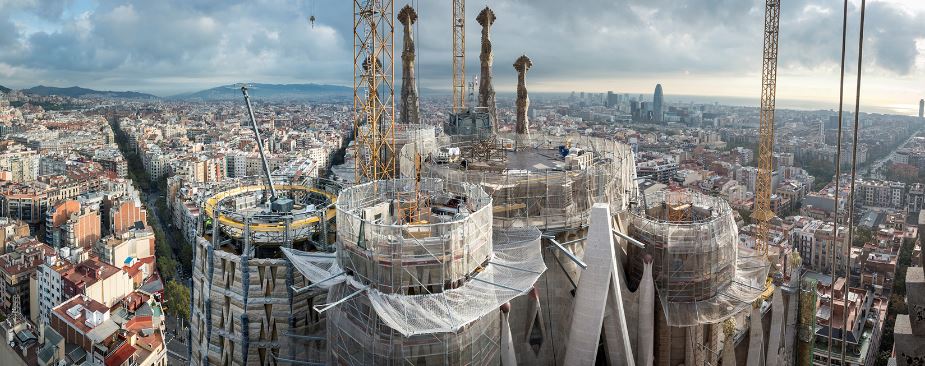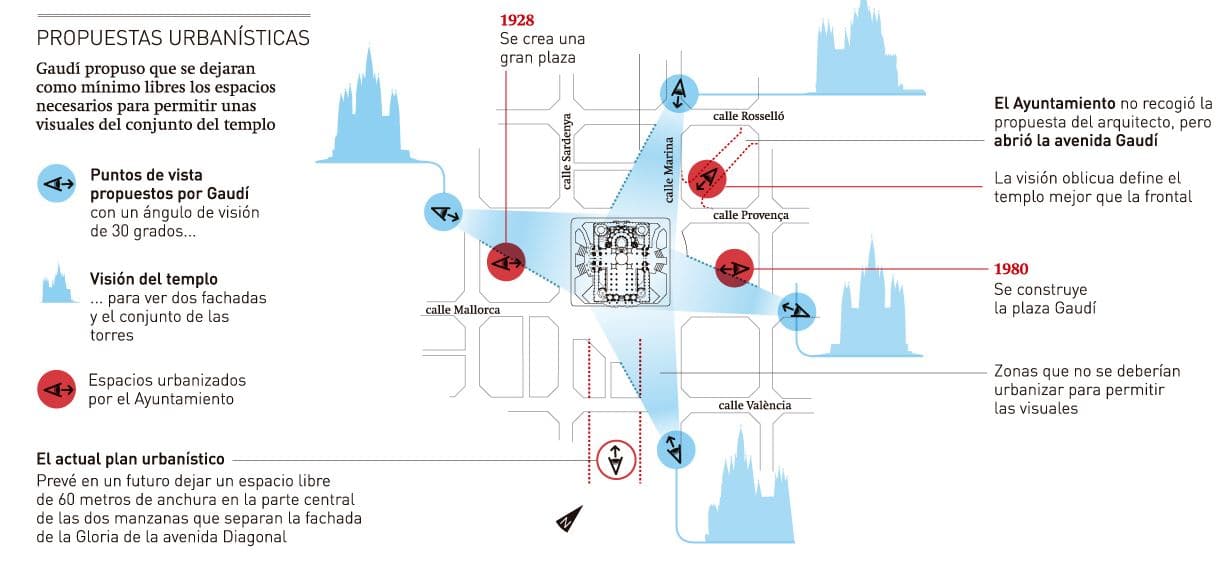-
Phone Number
-
Email Address
By now, famed architect Antonio Gaudí and his most representative work, the Sagrada Family , they do not need representations. One of the most visionary architects throughout history with a captivating genius and imagination has achieved to day today, that seven of his works are World Heritage Sites by UNESCO (See also Gaudí's Casa Batllo), but without a doubt the most emblematic and visually impressive work is the temple of the Sagrada Familia in Barcelona .
An architectural icon visited by more than four million people per year, which continues to impact the lives of many passers-by and visitors. An architect with a unique style and unmistakable, which mixed the forms of nature with an incomparable technical perfection illuminating unique works and eclectic.
Around 1883, Gaudí accepted the task of determining the

The architect used much of his life and efforts to this work (43 years), where the last 15 years he did it in a without accepting any other assignment, innovating in construction techniques and trying to use the technologies of that time.
To this day, the team in charge of finishing the majestic The work continues to work with the latest technologies; software aeronautical engineering, virtual reality recreations or 3D printers (See also the article on a 3D printer for build a house in 24 hours). are the new tools that architects use to try to glimpse and complete an architectural work that takes more than 100 years being built.
But not only the building itself needs new technologies. The surrounding urbanism and the amount of visitors incorporate new challenges of social coherence in areas with high tourist intensity. neighborhoods that are being monitored by tools based on big data or IoT, and even with sophisticated programs that incorporate artificial intelligence technology as we can test in the following video:
Content menu:
We would like to add a series of infographics to see which is the architectural and constructive situation of the building from the perspective of history and what parts of it we remain to be finished in order to have a perspective general. (Clicking on the following image enlarges it)
Holy Family Chronology

Out of curiosity, as we like from time to time to detail the articles we have searched for different infographics so that we can see the majesty of the entire building, both from its architectural features how to try to understand the magnitude of the work or the plans of the same thanks to a illustrative infographic by Raúl Camañas, Rocío Márquez and Oriol Malet for the newspaper La Vanguardia.
So that we are aware of the size and the planes of the Holy Family :

Due to the dimensions of the building and the plot, undoubtedly affects the surrounding urbanism:

Regarding the dimensions in height, width and sections of the building and plant of the same, we can identify it in the following plans; The first two correspond to the Passion façade and Nativity façade correlatively, and the third, to the floor plan in section.
Remember that the building has three portals or main facades what are they:
For an adequate view of both the porticos named above, as well as the plans and construction elements most representative, we can access from HERE before a large infographic.
Since we have a chronological vision by years of the Sacred Family and an idea of the parts that make up this magnificent building from the architectural perspective, now missing recognize that construction elements have not yet been built and we can detail it from the following infographic of the Expiatory Temple of the Sagrada Familia .

There are many unknowns surrounding the question of when the construction of the Sagrada will be finished Family . Although the most skeptical predict that in the 2026 we can enjoy a captivating end after 144 years since its inception (according to the architect director Jordi Faulí), The reality is that the biggest towers still have to be built. heights of the building, and it is not only a variable of constructive will. We are facing other factors, both constructive as well as economic that without a doubt - according to what they say some architectural scholars – will influence the date of the end of work.